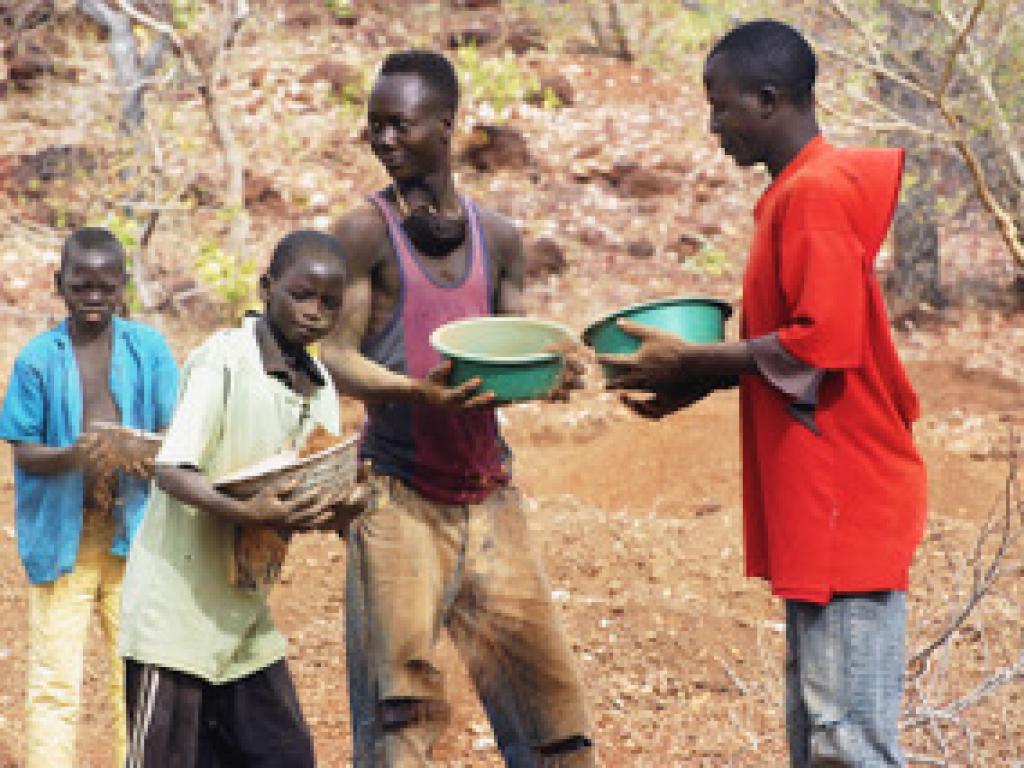Hunting for Treasure in a Playground from Hell: Child Labour in DRC Cobalt Mines

The market for cobalt has exploded in recent years, with demand driven by the surge in production of lithium batteries for electronics and electric cars. Cobalt is a key ingredient in lithium batteries. The price of Cobalt has tripled in value since 2011 and is expected to continue on this trajectory.
The electric vehicle is the primary force propelling the cobalt boom. Electric car batteries each require between five and fifteen kilograms of the metal, roughly a thousand times the amount in smartphone batteries.
The boom has focused attention on cobalt’s complex and controversial supply chain. As the demand for cobalt increases, the industry is presented with the challenge of finding stable and responsibly sourced cobalt.
More than half of the world’s supply of cobalt comes from the Democratic Republic of Congo (DRC). Twenty percent of DRC cobalt is mined manually, often by young children. The latest research by the United Nations Children's Fund (UNICEF) estimates 40,000 children are working in DRC mines.
In 2016, DRC’s overall cobalt production fell following the Amnesty Report produced by Amnesty International. The Report exposed the shocking conditions under which cobalt, used to power the world’s mobile phones, laptop computers, and other portable electronic devices, is mined in the DRC. According to the Report, child miners work up to 12 hours a day, earning between $1 and $2.
Artisanal miners, including thousands of children, mine cobalt in DRC under hazardous conditions and are often exposed to physical abuse and poisonous gases released from the mines. Using basic hand tools, without even the most basic protective equipment, artisanal miners dig out rocks from narrow, unsafe tunnels deep underground, and accidents are common.
According to Amnesty International, large companies like Samsung and Sony are not doing enough to ensure the cobalt they use in batteries is not mined by child labour. The human rights group said almost half of the 28 largest companies that use cobalt, including Microsoft, Renault and Huawei, were failing to demonstrate even ‘minimal’ compliance with international due diligence standards.
Despite the crackdown by Amnesty International, cobalt production rebounded again in 2017. Most of the cobalt-hydroxide is mined from illegal artisanal mines where mining activities remain highly unregulated and child labour is most rife. Rising cobalt demand has helped boost production at artisanal mines in the DRC by 18% in 2017.
Fortunately, some companies have refused to use ‘unethical cobalt’ in their batteries. Tech giants and electric vehicle manufacturers are demanding better transparency in the production of cobalt. Tesla, a car manufacturing and tech company that uses cobalt in the manufacturing of lithium-ion rechargeable batteries, has in the past sourced cobalt from the DRC. In 2014, Tesla undertook to use cobalt mined only in North America, withdrawing their support of the DRC industry. Furthermore, Tesla announced that the company would be developing batteries for vehicles that do not require cobalt, thus leading the move away from using cobalt. Apple became the first company to publish the names of its cobalt suppliers, and Amnesty International’s research shows Apple is currently the industry leader when it comes to responsible cobalt sourcing. Since 2016, Apple has actively engaged with Huayou Cobalt to identify and address child labour in its supply chain.
Unfortunately, other major electronics brands have made alarmingly little progress. The cobalt mining industry is still booming. Microsoft, for example, is among 26 companies that have failed to disclose details of their suppliers, not complying with even the basic international standards.
Not all cobalt extracted is used for the manufacturing of batteries. Fifty-six percent of the world's production is used in military and industrial products like jet engines. For industries such as these, the reality is that there are few cobalt producers available outside of the Congo.
The DRC government responded to the child labour issue raised in the Amnesty Report, by revising the country’s Labour Code[1] in 2016. The revised Labour Code raised the minimum age of work to 18, but children, aged 16 and 17, may still engage in light work as determined by the Ministry of Labour. Furthermore, children may not work at night. Since only 10 to 37 percent of all births are registered in the DRC, information on the ages of children is not readily available, thus rendering children susceptible to exploitative child labour practices. The DRC government has furthermore drafted a new national strategy aimed at eliminating child labour in the mining industry by 2025.
While it is too soon to assess the impact of the DRC government’s actions, the lack of concrete timelines, clearly assigned responsibilities and an implementation plan will hamper the success of these initiative. Furthermore, since no harsh penalties are currently prescribed for child labour in the DRC mining sector, it continues unabated. In addition, the DRC has yet to adopt a Mining Code revision that punishes forced child labour on mining sites.
This is a crucial moment for change. As demand for rechargeable batteries grows, companies have a responsibility to prove that they are not profiting from the misery of miners and underage children working in unsafe conditions in the DRC. The energy solutions of the future must not be built on human rights abuses. Companies have a responsibility to identify, prevent, address and account for human rights abuses in their cobalt supply chains.
Written by Rebecca Pein.
[1] Law No. 15-2002 of 16 October 2002, amended by Law No. 16/010, promulgated on 15 July 2016
